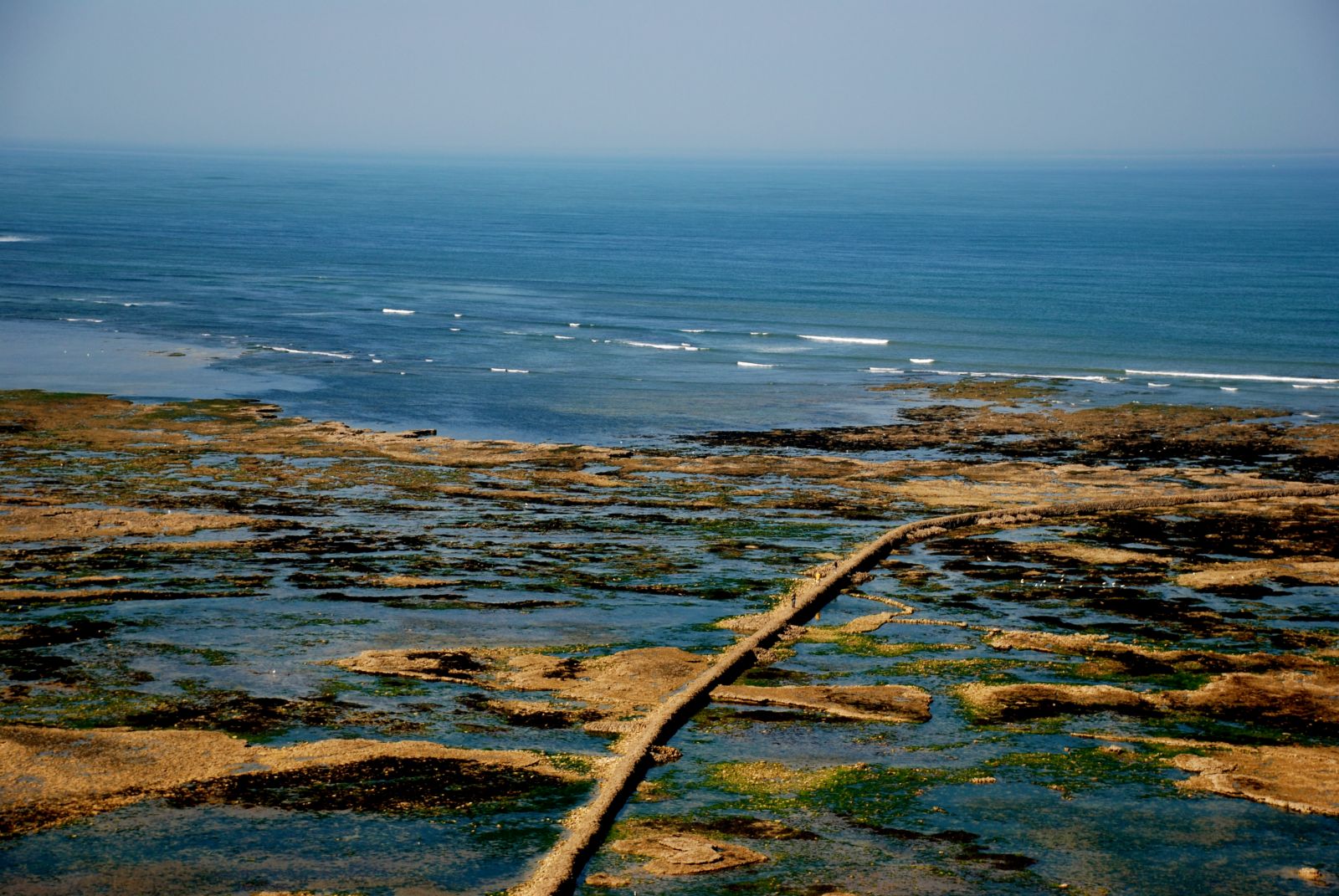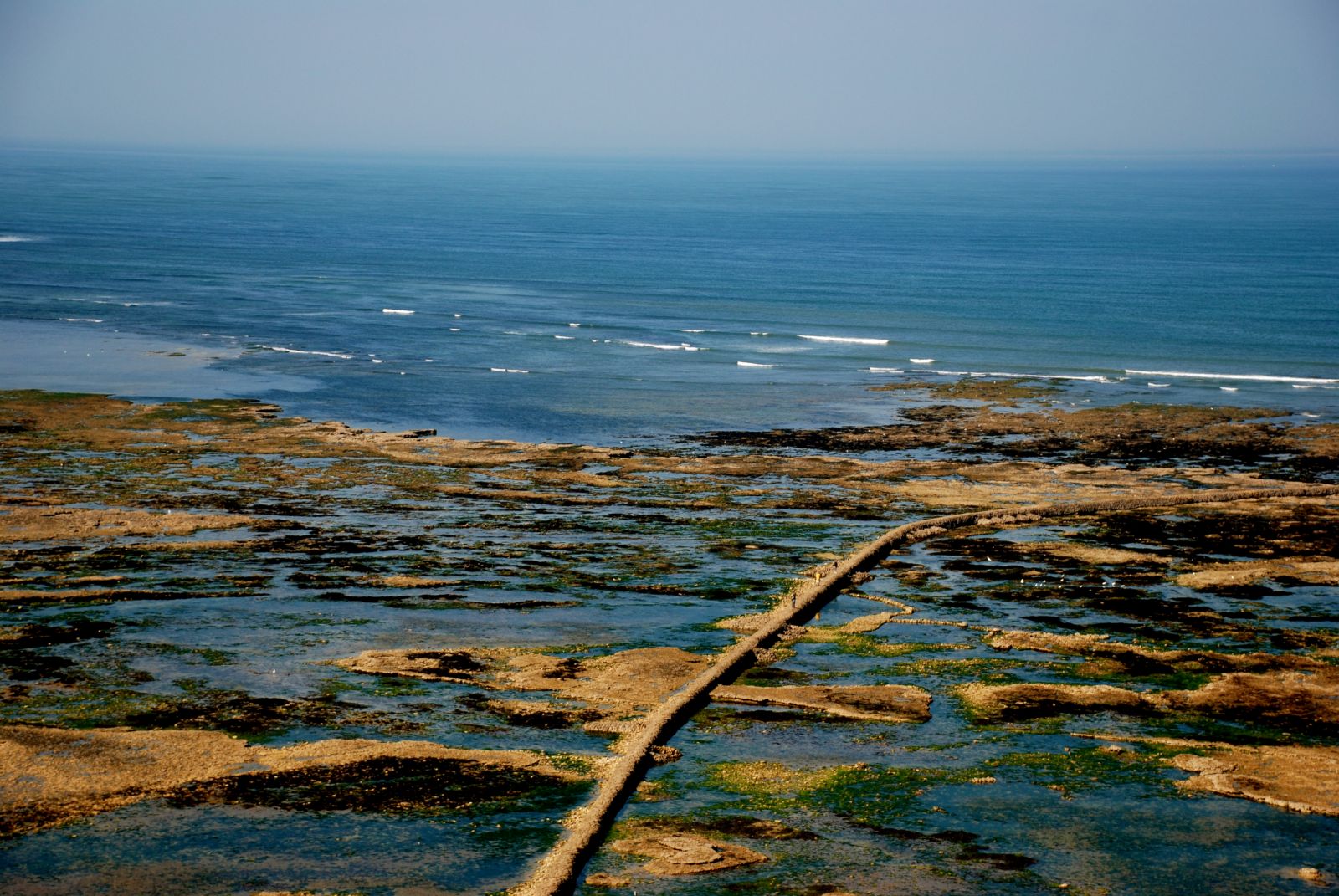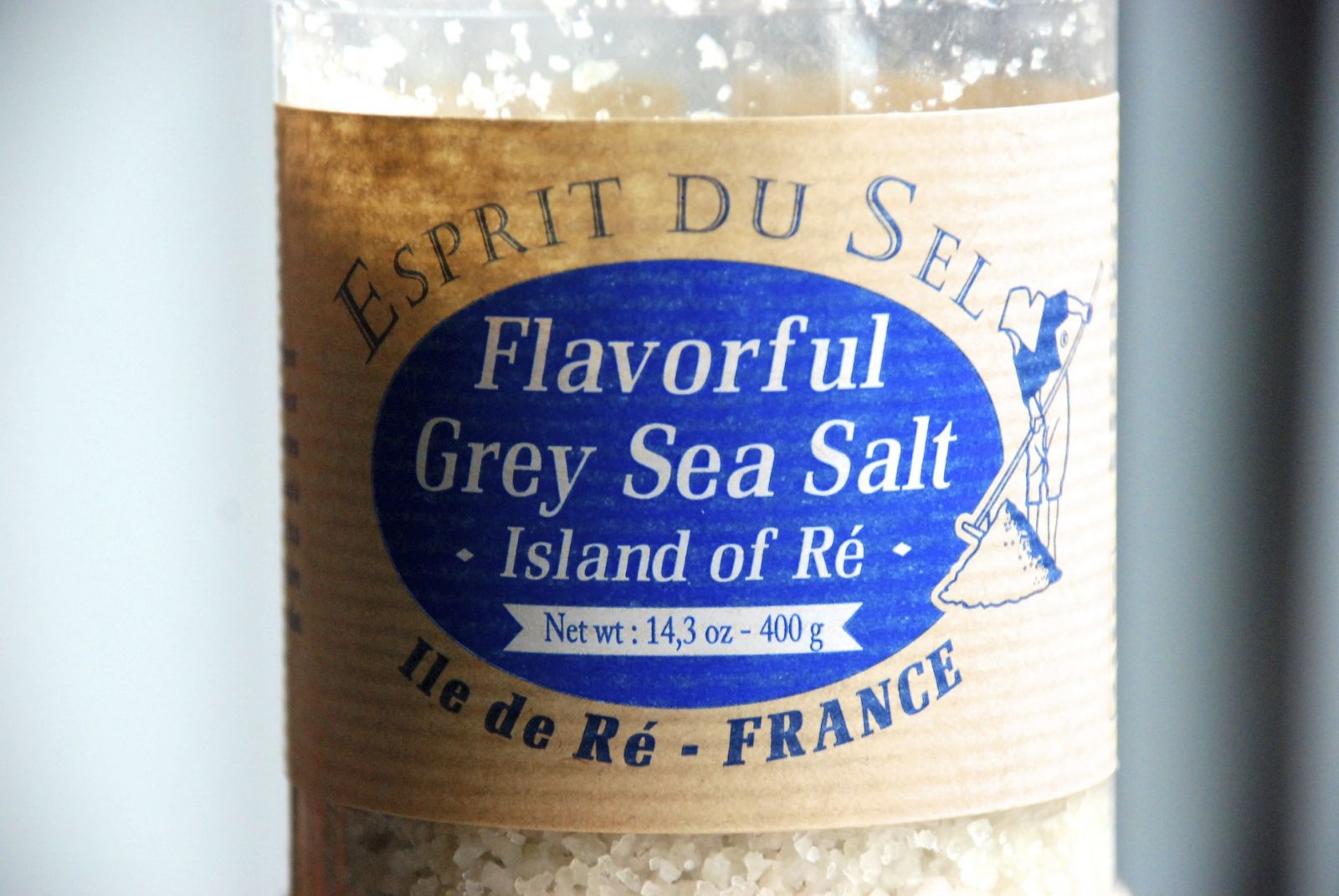Q&A with Hervé Rocheteau: A Saunier’s Life on Île de Ré, France

“French people believe very strongly in the idea of terroir: We believe in locally made products, especially those that have a strong sense of identity and heritage. If I do my part and make my salt with as much respect as possible, then I’ve done my job.” —Hervé Rocheteau, Île de Ré, a small island off the western coast of France (pictured)
Tell us about your job.
I am a salt maker: My job is to manage a series of salt evaporation ponds, also known as salterns or salt pans. I feed saltwater from the ocean into different ponds very slowly; then the sun and the wind evaporate the water. Finally, the salt concentration becomes so high that it crystallizes, and results in sea salt. My work consists of managing the water flow [the hydraulics] in accordance with the weather, and then harvesting the sea salt. We harvest gros sel (large-crystal salt) and fleur de sel (fine crystal salt).
What led you to your current position?
The decision to make a radical change in my professional life. One day I reassessed my skills and reexamined my expectations for my personal and professional life.
What is your favorite part of the job?
I like everything about the job. In fact, I’d say it’s a passion more than it’s a job. I love the environment; it’s so peaceful to be around nature all day, to hear the birds. I like the variety too; you need to be versatile to do this job well. Each day I build tools, read, interpret and anticipate the weather, manage water flow….
The job changes according to the seasons: in winter, the work centers on restoring the salt ponds. In spring, you make sure everything is ready to go by cleaning the ponds, and refilling them with water. In summer, we harvest the salt: we “pull” [or rake] the gros sel and “pick” the fleur de sel. In the fall, you either do some construction on the ponds, or flood them with water to protect them against bad weather.
What is a typical day like for you?
A typical day depends on the season, and on the weather.
In spring, as soon as it’s warm enough and if it isn’t raining, I clean the ponds. I remove the deposits of silt left over from the last season and the winter, and use it to sort of grease the salt basins. Then I put water back into the ponds.
In the summer during harvest, if it’s sunny, a typical day goes like this: At sunrise, I rake half of the gros sel. Gros sel is harvested on what we call “tiles,” because the crystallizing ponds are five by five meters. My salt farm is medium-size, and I have 70 tiles. (Hence, I rake 35 of them at a time.) The next morning, I rake the other half, and so on and so on.
Around 11am, I redo the water levels in the “nannies” (our name for the penultimate salt basins), as well as the tiles, which are the farthest basins. I let salt collect on the edges of the basins until 2pm.
A 2pm, I “roll the salt”: I drive a small tractor over what we call the “rolling track” and then I load up 35 piles of salt. (This adds up to around two tons of gros sel.) Then I unload the salt onto a “tasselier,” which is sort of an elevated pile where I keep the season’s harvest. We call this pile of salt the pilot.
From 2pm to 5pm: I use this time to sort the fleur de sel from the day before. I sift through it manually to remove any dirt, seeds, or insects. Often, I also modify the water-flow settings into the basins, depending on how the weather is behaving. The process is similar to heating milk on a stove; you need to constantly watch it and be ready to make little changes.
Between 5pm and nightfall, when the weather is good, I harvest the fleur de sel. Fleur de sel are very fine crystals of salt, which can be found floating on the surface of the salt basins. They form in patches due to the wind blowing over the basins. If I don’t collect the fleur de sel in the evening, the morning dew will sink it, and it will be lost.
How would you say salt speaks to the culinary landscape of Île de Ré?
I’m not a cook myself, but my products are used widely in both local and national cuisine. Any cook “worth his salt” should season their broths and soups with fleur de sel or gros sel.
On Ile de Ré and along the Atlantic coast of France, salt evaporation ponds date back to the Middle Ages. (My salt farm dates to the 15th or 16th century.) During the Middle Ages and before, salt had great monetary value and was used as currency itself. (The word salarium comes from Latin, and was the ration of salt given to Roman soldiers as a salary.) Clergy and noblemen bought salt farms, and then rented them to farmers. Salt was very important economically because it allowed for trade with the northern countries, who needed salt to preserve fish and game into the winter.
The prevalence of salt declined slightly in the 1950s, with the arrival of the refrigerator, because people were no longer dependent on salt as a preservative. Also, newer and faster forms of transportation made salt cheaper and more accessible to everyone.
In the 1980s, salt workers from Guérande, a famous salt city in the region of Brittany, realized that the profession was starting to die out. (These men were an average of 60 years old.) They decided to try to revive the profession by starting a foundation, with the help of the French government. Since then, the average age of a salt maker has lowered to 40 years old.
In my opinion, the revival of the salt-making profession is not due to political will (i.e., the desire to save a few jobs). I think the reason for the revival is twofold: First, it is economically viable and attracts tourism to the region. Second, French people believe very strongly in the idea of “terroir.” We believe in locally made products, especially those that have a strong sense of identity and heritage.
What’s one iconic dish a visitor to Île de Ré should not miss?
Sea Bass baked in a salt crust. Or fava beans à la croque en sel, which are raw fava beans served with just a sliver of butter and a pinch of fleur de sel.
Eat Your Word focuses a lot on a city’s historic, traditional foods. What do you think the future of food will look like in Île de Ré?
I hope Île de Ré, and France in general, holds onto its culinary identity and traditions. I hope to continue to enjoy unpasteurized cheeses, old varietals of tomatoes and apples, and many other “unsterilized” items that haven’t been available in the States for a long time. Long live wine, not soda! Long live good bread, not Big Macs and junk food!
I think many French people share my point of view; unfortunately due to economic constraints, not everyone can afford to eat healthy and organic foods, simply because it costs more. If it is the will of the people, and of the government, to return to a more careful, healthy form of agriculture, then the future of cuisine is safe. (Organic Big Macs!) If, however, the processed-food industry wins, I hope I’m not alive to see it.
Voilà, the debate can last forever, because there is so much to say about food and cuisine. At my level, I am only a small link in the chain, but it’s the butterfly effect: If I do my part and make my salt with as much respect as possible, then I’ve done my job. If my salt can make an American tasting it happy, why not!
Translated from French by Cristina Sciarra.
About the author: Cristina Sciarra is a writer, a photographer, and a culinary enthusiast. In her spare time, she travels and creates recipes for her website, theroamingkitchen.net. Got your own bottle of gros sel or fleur de sel? See her recipe for sardine butter on EYW.





